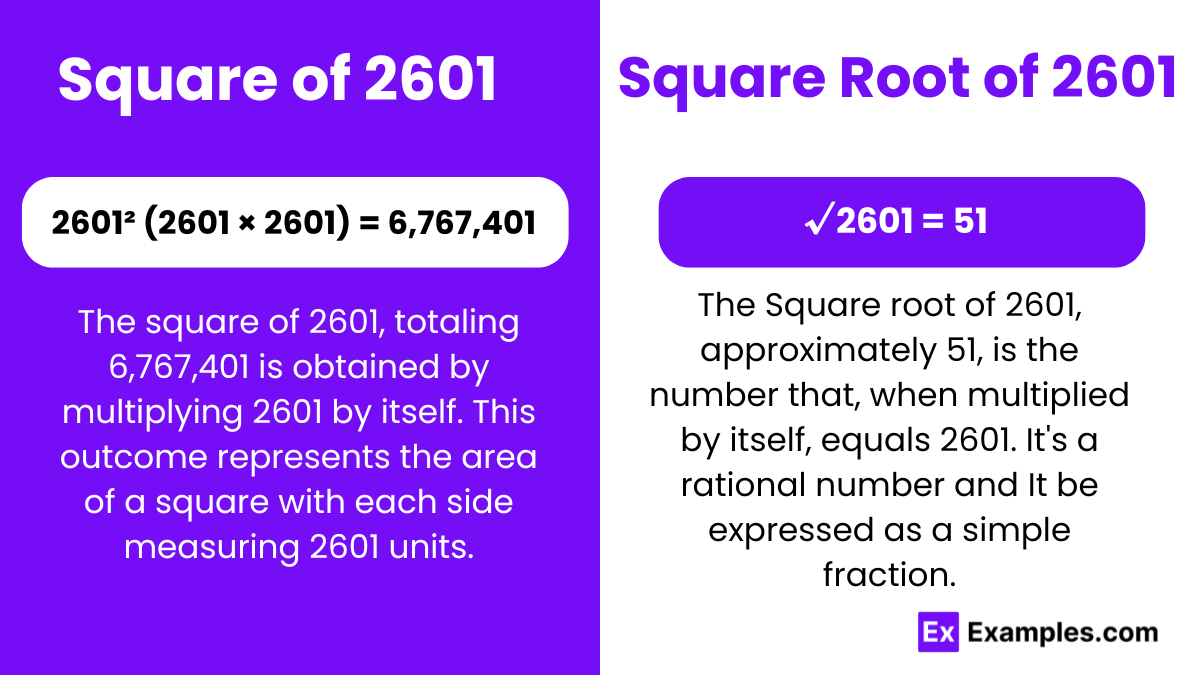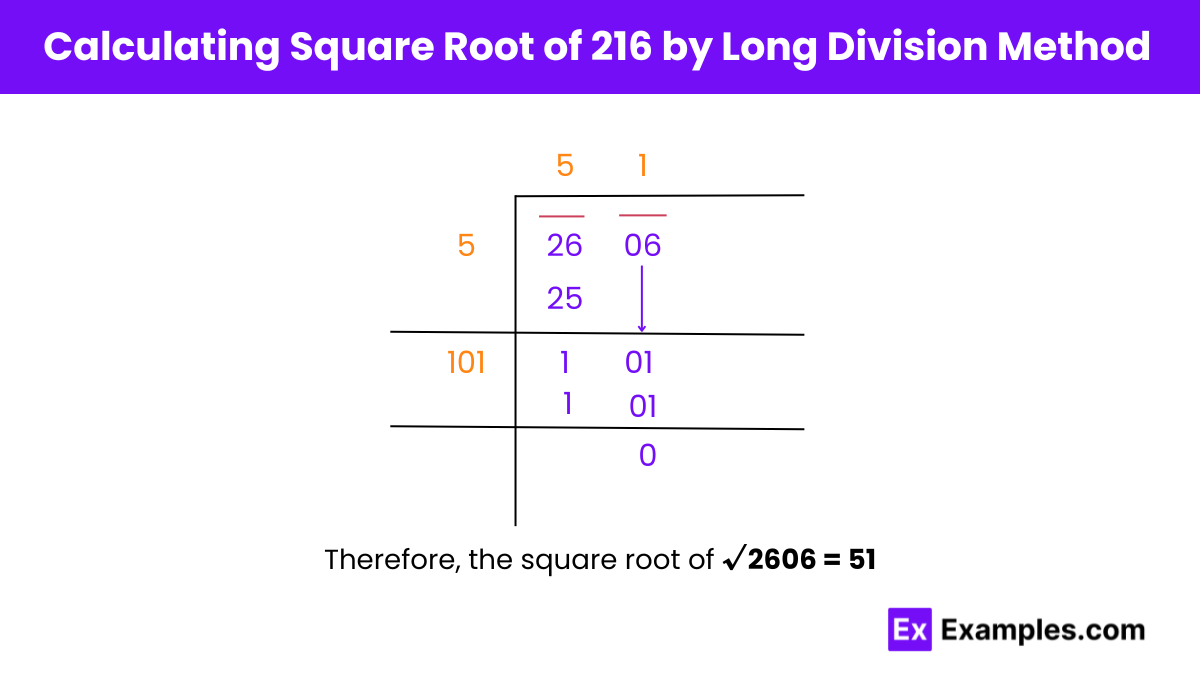What is the square of 2601?
6762001
6760001
6761000
6765000


Within the domain of algebraic mathematics, squares and square roots hold significant importance. Squaring a number, such as 2601, entails multiplying it by itself, yielding 6,767,401. This foundational operation is vital for exploring rational and irrational numbers. A grasp of these fundamentals enriches understanding of mathematical relationships and patterns. Squares illuminate inherent number properties, while square roots unravel intricate numerical mysteries. These concepts serve as beacons, guiding mathematical explorations into fractional territories. Proficiency in squares and square roots equips mathematicians to navigate varied mathematical landscapes, unveiling the elegance and complexity inherent within algebraic frameworks.
The square number of 2601 equals 6,767,401, obtained by multiplying 2601 by itself, a fundamental operation in algebraic mathematics, uncovering inherent number properties.
The square root of 2601 is 51. This fundamental mathematical operation reveals the value that, when multiplied by itself, equals 2601.
Exponential Form: 2601^½ or 2601^0.5
Radical Form: √2601
Rational numbers are expressible as the quotient of two integers. Irrational numbers, however, cannot be represented as fractions of integers. Examples of irrational numbers include the square roots of non-perfect squares.

Forming pairs: 26 and 01
Step 1: Find a number (Y) (5) such that its square is less than or equal to 26. (5² = 25).
Step 2: Divide 26 by 5 with the quotient as 5.
Step 3: Bring down the next pair, 01, to the right of the remainder 1. The new dividend is now 101.
Step 4: Add the last digit of the quotient (5) to the divisor (5), i.e., (5 + 5 = 10).
Step 5: To the right of 10, find a digit (Z) (which is 1) such that (10Z × Z ≤ 101). After finding (Z), together 10 and (Z) (1) form a new divisor 101 for the new dividend 101.
Step 6: Divide 101 by 101 with the quotient as 1, giving the remainder (= 101 – 101 × 1 = 101 – 101 = 0).
Step 7: We stop the process since the remainder is now 0 and there are no more digits that can be brought down.
A perfect square is an integer that can be expressed as the square of another integer. Therefore, the square root of 2601 is 51.
The LCM of 2601 is 2601 itself because it is a prime number and has no other factors other than 1 and itself, making it the least common multiple.
2601 is divisible by 1, 3, 9, 17, 51, 153, 289, 867, 2601.
The prime factorization of 2601 is 3⁴ ×172².
Text prompt
Add Tone
10 Examples of Public speaking
20 Examples of Gas lighting
What is the square of 2601?
6762001
6760001
6761000
6765000
What is the square root of 2601?
51
52
53
54
If the square of a number is 2601, what is the number?
50
51
52
53
What is 51 squared?
2601
2500
2701
2801
Which of the following is the closest approximation to the square root of 2601?
50
51
52
53
The number 2601 can be expressed as the product of which two identical factors?
49 × 53
51 × 51
50 × 52
48 × 54
Which of the following is not a factor of 2601?
1
50
51
52
If a number’s square is 2601, then which operation would correctly find the original number?
Addition
Subtraction
Square root
Multiplication
What is the product of the square root of 2601 and 2?
102
100
104
108
How can you check if 2601 is a perfect square?
By dividing it by 2
By finding its square root
By adding its digits
By multiplying it by itself
Before you leave, take our quick quiz to enhance your learning!

